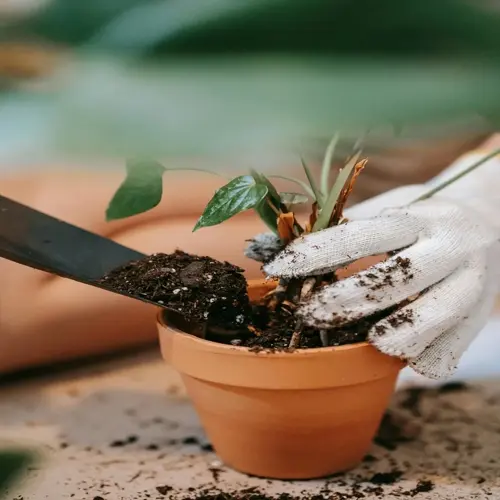How to Save Seeds: A Complete Guide

Written by
Paul Reynolds
Reviewed by
Prof. Martin Thorne, Ph.D.Understand the appropriate methods of harvesting, processing, and storing seeds on how to save seeds.
Choose open-pollinated seed varieties rather than hybrids, as hybrids do not produce true-to-type seeds.
Use isolation distances or physical barriers such as row covers to prevent cross-pollination from taking place.
Processing wet-seeded crops like tomatoes by fermentation allows for proper seeds to be harvested and can be the only method of ensuring seed viability.
Store seeds in airtight containers with desiccant and below 40°F to increase shelf life.
Save $50+ a year and produce more heirloom varieties while increasing genetic diversity.
Article Navigation
Understanding seed saving practices turns your garden into a self-sustaining environment. This ancient practice connects you to generations of gardeners who have preserved our food system. You become a steward to rare plant species that will be lost forever.
When you save seeds, you're enhancing the biodiversity of your local area. Just think about how special it would be to harvest tomatoes from seeds your grandmother once loved. That connection back in time creates a more resilient garden, which over the years is adapted to your climate and soil type.
This resource outlines practical techniques for saving vegetables, fruits, and flowers. Saving seeds can significantly reduce your gardening costs. You achieve real self-sufficiency while safeguarding unique genetic treasures from the sterile uniformity of industrial agriculture.
Why Save Seeds
Saving seeds can drastically reduce your gardening expenses. Commercial seed packets typically cost around $3 to $5 each, while seed saving requires no investment after the initial purchase. This will save the average gardener over $ 250 in five years.
We are in the middle of a biodiversity crisis, with 93% of our vegetable (cultivated): varieties having disappeared since 1900. By saving heirloom varieties, we are saving the flavors and disease resistance that modern hybrids and technology lost. Your garden transforms into a living gene bank, protecting the agricultural heritage of our ancestors.
Neighborhood seed swaps enhance community while fostering genetic diversity. Each spring, I exchange seeds from my Cherokee Purple tomato plants with my neighbor for seeds from his Moon and Stars watermelon, thereby maximizing the genetic diversity of our region while fostering a connection between us as gardeners. And when I get the watermelon seeds, I am preserving a rare adaptation to our area.
Seeds you saved at home will perform better in your particular garden than seeds purchased from the shop. They have adapted to your specific soil and climate over the generations of their ancestors, who have grown for you. Plants develop an inherent resistance to local pests and diseases over time, without the need for chemical intervention.
Choosing and Preparing Plants
Look for open-pollinated varieties, like 'San Marzano' tomatoes, if you have a reliable seed source. These will produce plants that are clones of one another every year. Hybrids produce 'chaotic' plants, like 'Big Boy' tomatoes. Use heirlooms to preserve the garden's true flavor and characteristics.
Biennial plants such as carrots should be treated specially. They need vernalization, or a cold period under 40°F (4°C) for 6-8 weeks. The best approach is to leave them in the ground for winter pre-treatment, then harvest the seeds after the plants flower in the second growing season.
Let's prevent cross-pollination by keeping varieties apart. Tomatoes require at least 10-20 ft (3-6 m) of distance. Corn needs 1 mile (1.6 km) separation. Use row cover to isolate squash plants. All of this ensures that your seed lines remain true to type.
Select healthy plants that exhibit disease resistance and that produce fruit true-to-type. In catalogs, watch out for hybrids/mutants labeled F1 (the kids). For biennials, if you're not overwintering them, make sure to mark their locations (before winter). These preparations will make sure you have seed to harvest the next season.
Open-Pollinated Varieties
- True-to-type seeds: Produce genetically identical plants when properly isolated from cross-pollination during growth
- Heirloom examples: Varieties like 'Brandywine' tomatoes and 'Dragon Tongue' beans maintain consistent traits across generations
- Stable characteristics: Flavor profiles, coloration patterns and fruit sizes remain reliably consistent season after season
- Long-term viability: Ideal for multi-year seed saving projects due to genetic stability
- Availability sources: Typically available through specialized seed exchanges and heritage-focused catalogs
- Isolation requirement: Must be separated from other varieties of same species during flowering period
Hybrid Plants
- Cross-bred genetics: Created through controlled pollination between two distinct parent plant varieties
- Unpredictable offspring: Saved seeds produce plants with mixed characteristics from both parents
- Commercial examples: Common in varieties like 'Early Girl' tomatoes and 'Sweetness' corn hybrids
- Seed saving limitation: Not recommended due to significant trait variations in subsequent generations
- Catalog identification: Always labeled as F1 in commercial seed catalogs and packaging
- Single-season use: Best utilized only for the initial planting season purchased
Annual Plants
- Single-season lifecycle: Complete entire growth cycle from germination to seed production within one growing season
- Common examples: Includes beans, tomatoes, lettuce and zinnias which mature relatively quickly
- Beginner-friendly: Simplest category for new seed savers due to straightforward timeline
- Seed maturity: Seeds develop simultaneously with edible harvest in same growing period
- Space efficiency: Don't require long-term garden space commitments beyond single season
- Harvest timing: Collect seeds when plants naturally dry at season's end
Biennial Plants
- Two-year lifecycle: Require vernalization period with cold temperatures to initiate flowering process
- Temperature requirement: Need minimum 6-8 weeks below 40°F (4°C) to trigger flowering mechanism
- Common varieties: Carrots, onions, beets and Swiss chard must overwinter to produce seeds
- Growth pattern: Edible roots harvested Year 1; flowering stalks and seeds develop Year 2
- Storage options: Can be overwintered either directly in ground or in cool storage facilities
- Timeline planning: Requires dedicated garden space through winter into second growing season
Perennial Plants
- Multi-year growth: Live three or more years while producing seeds annually after establishment
- Examples include: Asparagus crowns, rhubarb plants, fruit trees and perennial lavender varieties
- Establishment period: Typically require 2-3 growing seasons before producing significant seed crops
- Permanent location: Need dedicated garden space that won't be disturbed for multiple years
- Maintenance needs: Benefit from seasonal pruning and nutritional feeding for optimal seed production
- Long-term investment: Provide ongoing seed harvests after initial establishment period
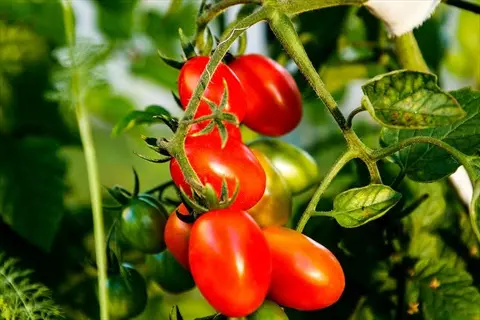
Plant Health
- Disease-free specimens: Carefully examine foliage and stems for fungal spots, mildew or viral discoloration patterns
- Vigorous growth patterns: Select specimens demonstrating strong stem development and extensive root systems
- Natural resistance qualities: Prioritize plants thriving without chemical fungicides or pesticide treatments
- Pest resilience evidence: Avoid specimens showing significant insect damage or egg clusters on leaves
- Environmental stress recovery: Note plants rebounding well after extreme weather conditions
- Overall vitality: Choose the most robust plants showing dark green foliage and steady growth
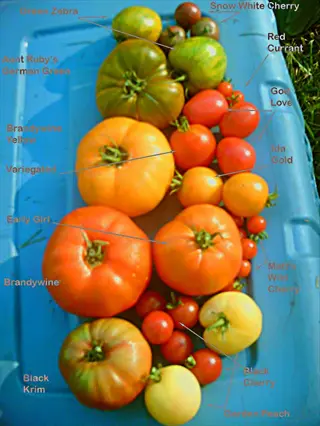
Fruit Quality
- True-to-type characteristics: Verify fruits match variety descriptions for shape, size and coloration patterns
- Desirable trait selection: Prioritize specimens exhibiting preferred flavor profiles, textures and sizes
- Early ripening advantage: Save seeds from first fruits to encourage climate adaptation in future generations
- Consistent performance: Select plants producing uniform fruit throughout entire growing season
- Deformity exclusion: Discard misshapen, undersized or otherwise abnormal produce immediately
- Flavor concentration: Choose fruits with most intense aromas and tastes characteristic of variety
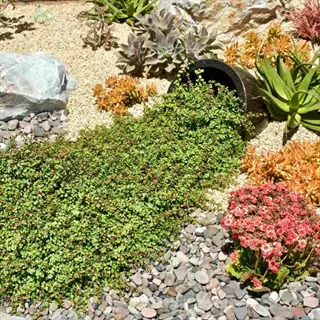
Environmental Adaptation
- Local climate suitability: Identify plants naturally thriving in regional temperature and humidity conditions
- Drought tolerance evidence: Essential selection factor for arid regions with water restrictions
- Cold hardiness qualities: Critical consideration for northern gardens with short growing seasons
- Weather resilience markers: Tag specimens surviving unexpected frosts or heat waves undamaged
- Soil compatibility: Note plants performing well in your specific garden soil composition
- Microclimate response: Select specimens demonstrating adaptation to garden's unique conditions
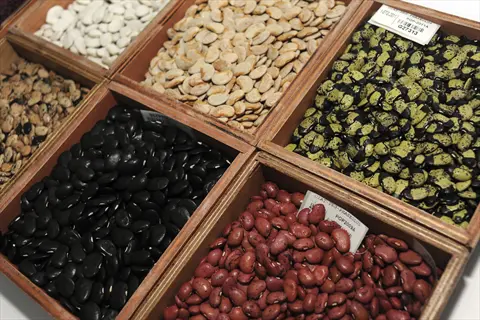
Genetic Diversity
- Multiple specimen sourcing: Collect seeds from minimum 5-6 individual plants for genetic diversity
- Inbreeding prevention: Avoid saving from isolated plants to maintain population health and vigor
- Seasonal representation: Combine seeds from early, mid and late-season fruit producers
- Annual rotation practice: Maintain genetic vitality by changing parent plants each growing season
- Population size management: Save larger quantities from small plantings to preserve diversity
- Trait distribution: Ensure selected plants represent full range of desirable characteristics
Disease Resistance
- Pathogen resilience evidence: Identify plants showing natural resistance to common local diseases
- Fungal resistance priority: Especially valuable in humid climates prone to mildew and rust issues
- Viral tolerance: Note plants unaffected by common viruses in your growing region
- Chemical-free performance: Prioritize specimens maintaining health without fungicide applications
- Preventive qualities: Select plants that avoided infection during regional disease outbreaks
- Environmental influence: Document conditions that supported healthiest plant development
Harvesting and Processing Seeds
Identify crops with dried fruit, such as beans, from their dry pods, which rattle when shaken. Identify wet fruit crops, such as tomatoes, by seeds enveloped in a viscous, pulpy material. When processing dry crops, we need to thresh (break apart) the pods. For wet crops, we need to ferment, to help separate the seeds from any gelatinous covering.
Recognizing signs of maturity before harvesting. The seeds of tomatoes mature when their fruit softens and the color changes. Cucumbers will be yellow on the outside with plump, dark seeds. Corn will have a brown husk with kernels that dent beneath pressure. Lettuce will have feathery seed heads just like a dandelion.
Tomatoes are truncated fermentation seeds for 3 days (72 hours) at 70°F (21°C), causing white mold to develop. For cucumbers, 24-48 hours (1-2 days) of fermentation works great. Afterward, rinse with a vigorous spray of water. The fermentation removes germination inhibitors for better germination.
To dry the pods of beans and grains, first crush them and then winnow the chaff. Then spread the seeds on a screen and keep them in a dark, ventilated area for 7-14 days. Drying properly will prevent mold growth. When the seeds snap easily when bent, they are ready for storage.
Dry-Fruited Crops
- Definition: Plants where seeds dry naturally on the plant
- Processing method: Dry processing (threshing, winnowing)
- Examples: Beans, peas, lettuce, grains, okra, radishes
- Harvest sign: Pods rattle when shaken; seeds resist fingernail pressure
- Storage prep: Requires 2 weeks drying after harvest
- Tool recommendation: Mesh screens for winnowing
Wet-Fruited Crops
- Definition: Plants with seeds encased in fleshy fruit
- Processing method: Wet processing (fermentation, rinsing)
- Examples: Tomatoes, cucumbers, squash, melons, eggplants
- Harvest sign: Fruit softens/changes color; seeds plump
- Special step: Fermentation breaks down germination inhibitors
- Tool recommendation: Glass jars for fermentation
Legumes & Pods
- Dry processing: Beans and peas with brittle pods rattling when shaken
- Harvest timing: Collect after 4-6 weeks of drying on vine
- Threshing method: Crush pods between hands or with mallet
- Seed prep: Winnow to separate seeds from chaff immediately
- Drying period: 2 weeks (14 days) minimum before storage
- Storage test: Seeds resist fingernail pressure
Grains & Grasses
- Dry processing: Corn, wheat with fully browned husks
- Harvest sign: Kernels extremely hard; stalks completely dry
- Threshing: Beat seed heads against inside of barrel
- Winnowing: Use box fan on low setting for chaff removal
- Drying: 3 weeks (21 days) minimum after processing
- Viability test: Seeds snap cleanly when bent
Leafy Greens
- Dry processing: Lettuce, spinach forming feathery seed heads
- Harvest timing: 2-3 weeks after flowering when parachutes visible
- Processing: Rub seed heads between palms over screen
- Screening: Use 1/8 inch (3 mm) mesh to separate seeds
- Drying: 10 days (240 hours) in dark, low-humidity area
- Storage: Paper envelopes in refrigerator
Gel-Coated Fruits
- Wet processing: Tomatoes, cucumbers requiring fermentation
- Fermentation: 3 days (72 hours) in glass jars at 70°F (21°C)
- Signs: White mold forms; viable seeds sink to bottom
- Rinsing: 5 minutes under running water in fine sieve
- Drying: 1 week (168 hours) on coffee filters
- Test: Seeds shatter when crushed
Fleshy Fruits
- Wet processing: Squash, peppers with plump, firm seeds
- Extraction: Scoop seeds immediately after harvest
- Rinsing: Wash under cool water to remove pulp
- No fermentation: Direct drying for 10 days (240 hours)
- Drying method: Single layer on window screens
- Test: Seeds resist bending pressure
Dry Processing
- Harvest: Collect when pods/stems fully dry on plant
- Threshing: Crush pods using mallet or roller
- Screening: Sieve through mesh to separate seeds
- Winnowing: Use fan/breeze to blow away chaff
- Final drying: Spread seeds 1 week in cool, dark location
- Storage test: Seeds snap when bent
Wet Processing
- Extraction: Scoop seeds with pulp into jar
- Fermentation: Soak 1-3 days until gel dissolves
- Decanting: Pour off floaters; keep sinkers
- Rinsing: Wash under running water in sieve
- Drying: Spread on screens 1-2 weeks
- Test: Seeds shatter when crushed
Threshing Techniques
- Manual crushing: For small batches - pods crushed between hands
- Mallet method: Place pods in sack, beat with wooden mallet
- Trampling: Spread plants on tarp, walk over them repeatedly
- Mechanical threshers: For large quantities of grains
- Screening: Separate seeds using 1/4 inch (6 mm) mesh first
- Safety: Wear dust mask during processing
Winnowing Methods
- Natural wind: Pour seeds between containers on breezy day
- Box fan: Set to low speed 3 ft (1 m) from workspace
- Multiple screens: Layer screens from coarse to fine mesh
- Drop technique: Pour seeds from height into bucket
- Cleaning: Repeat until no chaff remains
- Yield: Expect 10-20% weight loss from debris
Fermentation Process
- Container: Glass jars filled halfway with seed pulp
- Temperature: 65-75°F (18-24°C) for 72 hours maximum
- Stirring: Mix 3 times daily to break down gel coating
- Completion: Viable seeds sink; mold forms on surface
- Rinsing: Wash in sieve under running water 5 minutes
- Drying: Spread immediately to prevent germination
Seed Cleaning
- Dry screening: Use graduated screens for size separation
- Water float test: Discard floaters except tomato seeds
- Blower method: Hair dryer on cool setting for chaff removal
- Hand sorting: Remove discolored or damaged seeds
- Final inspection: Magnifying glass for pest eggs/mold
- Storage prep: Ensure moisture content below 8%
Drying Protocols
- Location: Dark, well-ventilated area below 80°F (27°C)
- Surfaces: Window screens, ceramic tiles, or glass plates
- Thickness: Single seed layer maximum for airflow
- Timeframe: 1-3 weeks (7-21 days) depending on humidity
- Testing: Seeds should snap not bend when ready
- Humidity control: Use silica gel in enclosed drying space
Storing Seeds for Future Gardens
seed viability is best maximized by using the correct storage method. Room temperature is relatively good for seeds used in one year (<70°F / 21°C). Refrigeration (32-41°F / 0-5°C) extends the product's life to approximately 2-5 years. A freezer (0°F / -18°C) can preserve seeds for 5 years or more.
Different crops have various storage longevity. Tomatoes can last 7-10 years frozen, while storage onions generally need replenishing every 1-2 years. Dry beans last 3-5 years refrigerated. Lettuce maintains its quality for 3-5 years when frozen. Be sure to label your containers with the harvest dates, for this very purpose.
Manage moisture using common household materials. Silica gel packets can be used and replaced every six months. Use powdered milk in cheesecloth, which will last for three months, or place 1/4 cup of dry rice in containers to absorb more humidity. Monitor seed snapping while bent before storing.
Airtight storage is critical. Glass jars with silicone seals provide better sealing than plastic bags that can attract moisture through static electricity. Vacuum-sealed bags or Mylar bags will prevent damage from oxygen. Fill containers 2/3 full with air buffers. Store in dark cabinets and out of direct sunlight.
Temperature Control
- Cool storage: Maintain 32-41°F (0-5°C) in refrigerator
- Freezing: Long-term storage at 0°F (-18°C) for 5+ years
- Room temperature: Only for 1-year use below 70°F (21°C)
- Stability: Avoid fluctuations greater than 10°F (5.5°C)
- Thermal mass: Use stone jars to buffer temperature changes
- Location: Basements or interior closets ideal
Moisture Management
- Relative humidity: Maintain below 40% RH
- Desiccants: Silica gel packets replace every 6 months
- DIY option: Powdered milk in cheesecloth lasts 3 months (90 days)
- Rice method: 1/4 cup (60 ml) dry rice in container absorbs moisture
- Testing: Seeds should snap when bent, not bend
- Warning: Any condensation indicates immediate redrying
Light Protection
- UV damage: Sunlight degrades seed embryos rapidly
- Containers: Use opaque jars or foil-lined storage tins
- Location: Dark cabinets or drawers preferred
- Labeling: External tags avoid opening containers
- Monitoring: Check annually for germination decline
- Exception: Light only affects stored seeds, not drying
Container Types
- Airtight glass: Mason jars with silicone seals most effective
- Vacuum sealing: Removes oxygen for longest viability
- Mylar bags: Lightproof alternative to glass
- Paper envelopes: Only for 1-season storage
- Avoid plastic: Static attracts moisture unless sealed
- Capacity: Fill containers 2/3 full to allow air buffer
Pest Prevention
- Freezing treatment: -10°F (-23°C) for 72 hours kills eggs
- Diatomaceous earth: Light dusting in storage containers
- Bay leaves: Natural repellent placed between seeds
- Seal inspection: Check monthly for insect holes
- Quarantine: Isolate new seeds for 2 weeks before storage
- Organic control: Neem-coated storage papers
Essential Information
- Crop name: Common and scientific name
- Variety: Specific cultivar e.g. 'Brandywine Tomato'
- Harvest date: Month/year collected
- Location: Garden zone and specific bed
- Quantity: Number of plants sourced
- Germination rate: Initial test percentage
Organization Systems
- Alphabetical: By crop name for quick access
- Seasonal: Group by planting season
- Viability: Sort by expiration year
- Color-coding: Tags indicate longevity
- Database: Spreadsheet with storage locations
- Access: Front-of-container labels
Inventory Management
- Annual audit: Test germination every January
- Rotation: Use oldest seeds first
- Sharing: Create swap bundles annually
- Tracking: Log usage in garden journal
- Replenishment: Note low-stock varieties
- Backup: Keep second copy in freezer
Digital Tools
- Spreadsheets: Track viability dates and quantities
- Mobile apps: Scan labels for instant access to seed data
- Cloud storage: Backup inventory lists online
- Reminders: Set alerts for germination testing dates
- QR codes: Link to growing guides on seed packets
- Database sharing: Collaborate with seed swap groups
Swap Preparation
- Standard labeling: Include variety, harvest date, location
- Packaging: Use small envelopes with clear windows
- Information cards: Add planting instructions
- Quality control: Test germination before sharing
- Legal compliance: Check regional seed exchange regulations
- Tracking: Number packets for recipient feedback
Saving Seeds: Crop-Specific Guides
Fermenting tomatoes takes 3 full days (72 hours) in glass jars at a temperature of 70°F (21°C), breaking down the gelatinous coatings that prevent germination. Only keep seeds that sank in fermentation; floating ones will not germinate. After the mold layer has formed, rinse well.
Skip the fermentation process for peppers. Place seeds onto a paper towel for pepper drying for 5-7 days (120 hours to 168 hours). Store in a dark area with low humidity. Be sure to break them off cleanly rather than simply bending them.
The processing is called Bean threshing. We use a mallet to break brittle pods. We then winnow with a box fan on low to separate the seeds from the chaff. We dry seeds for 14 days or 336 hours before storage. We keep varieties 10 ft (3m) apart.
Cucurbits, such as cucumbers, require shorter fermentation times, typically only one to two days (24-48 hours), compared to tomatoes. All squash seeds require no fermentation; rinse pulp when scooping. Dry cucurbit seeds for 10 days (240 hours), turning daily. Isolate by 1/4 mile (0.4 km).
Tomatoes
- Fermentation: Requires 3 days (72 hours) in glass jars at 70°F (21°C) to break down gelatinous coating
- Seed selection: Only save seeds from sinkers after fermentation; floaters are non-viable
- Drying: Spread on coffee filters for 7-10 days (168-240 hours) until brittle
- Variety choice: Heirloom varieties like 'Brandywine' produce true-to-type seeds
- Isolation: Needs 10-20 ft (3-6 m) separation from other tomato varieties
- Storage: Maintain 40% humidity in glass jars for 5-7 year viability
Peppers
- Harvest timing: Collect when fruits wrinkle slightly but before rotting begins
- Seed extraction: Scrape seeds directly onto paper towels without fermentation
- Drying: Air-dry 5-7 days (120-168 hours) in dark, low-humidity environment
- Viability test: Seeds should snap when bent, not flex
- Cross-pollination: Separate varieties by 50 ft (15 m) or use barrier cages
- Storage: Refrigerate in airtight containers with silica gel for 3-4 years
Beans & Peas
- Drying period: Leave pods on vine 6-8 weeks until they rattle
- Threshing: Crush pods by hand or with rubber mallet on hard surface
- Winnowing: Use box fan on low setting to separate seeds from chaff
- Storage prep: Dry seeds 2 weeks (14 days) minimum before sealing
- Isolation: Self-pollinating but needs 10 ft (3 m) separation for purity
- Longevity: Store in cool basement for 3-5 years with 85% germination rate
Cucumbers & Melons
- Maturity signs: Fruit softens and yellows; seeds plump and dark
- Fermentation: Optional 1-2 day (24-48 hour) soak improves germination
- Seed cleaning: Rinse vigorously under running water in colander
- Drying: Screen-dry 10 days (240 hours) with daily turning
- Cross-pollination: Separate varieties by 1/4 mile (0.4 km) or hand-pollinate
- Storage: Freeze in vacuum-sealed bags for 5-6 year viability
Squash & Pumpkins
- Harvest timing: Leave on vine until skin hardens (can't dent with thumbnail)
- Seed extraction: Scoop seeds immediately; rinse pulp under cool water
- No fermentation: Direct drying preserves germination rates
- Drying: Spread on screens for 14 days (336 hours) in well-ventilated area
- Species separation: Cucurbita pepo (zucchini) won't cross with C. maxima (pumpkin)
- Storage: Room temperature in paper bags maintains 4-6 year viability
Flowers
- Harvest timing: Collect seed heads 2-3 weeks after blooming ends
- Processing: Rub heads over screens; winnow outdoors on breezy days
- Drying: Spread on trays for 7 days (168 hours) in dark location
- Examples: Marigolds, zinnias, sunflowers, calendula and poppies
- Isolation: Separate varieties by 20 ft (6 m) to prevent hybridization
- Storage: Glass jars with desiccants maintain 1-3 year viability
Herbs
- Harvest timing: Collect seed heads when 50% brown (e.g., basil, cilantro)
- Processing: Rub flower spikes over fine mesh screens; winnow gently
- Cleaning: Sieve through 1mm mesh to separate tiny seeds from chaff
- Drying: Store in paper bags for 5-7 days (120-168 hours) before storage
- Storage: Glass containers with silica gel maintain 1-2 year viability
- Examples: Basil, dill, parsley, cilantro, chamomile and fennel
5 Common Myths
Hybrid seeds yield the same plants when saved as open-pollinated varieties do.
Hybrid seeds (F1 generation) show a large amount of genetic variation when replanted because they are hybrids from two differing parent lines. For example, saving seeds from 'Early Girl' tomatoes will produce plants that vary in fruit size, color, and ripening time. Only open-pollinated varieties like 'Brandywine' tomatoes will produce true-to-type plants generation after generation, assuming adequate isolation from cross-pollination.
Crops with wet seeds such as tomatoes and cucumbers need fermentation to produce viable seeds.
It is only critical for wet-seeded crops with gel-like seeds, like tomatoes and ground cherries, to undergo fermentation to break germination inhibition. Peppers, and squash do not have gel-like seeds and can simply be rinsed and dried without fermentation. Cucumbers benefit from fermentation, but it is not a necessity for viable seeds. On the other hand, if fermented, peppers will lose viability based on the fragility of their seed embryos.
Seeds saved from grocery store fruit and vegetables, will, in most cases, grow into the identical plant as its parents.
Most produce in grocery stores is hybrid fruit or vegetables, which are bred for durability in shipping, not seed capabilities. Harvesting seeds from fruit and vegetables grown in vegetable gardens usually results in a lot of surprises, especially if the hybrid seeds are from a variety produced with additives and growth inhibitors and then harvested prematurely. If saving seeds to grow, only save seeds from established, identity-open pollinated varieties, and only after being grown to a full maturity state in the vegetable garden.
Cross-pollination only occurs between plants of the same species, like different tomato varieties.
Cross-pollination happens between different species within the same genus, not just varieties. Zucchini (Cucurbita pepo) can cross with acorn squash (also C. pepo) but not with pumpkins (C. maxima). Carrots cross with wild Queen Anne's lace since they're both Daucus carota. Proper isolation requires understanding both species and genus classifications to prevent unwanted hybridization.
Drying seeds in direct sunlight speeds up the process and improves long-term storage viability.
Seeds dried indoors at 60-70F (15-21C) with 30-40% humidity maintain 20-30% higher germination rates after 3 years compared to sun-dried seeds due to UV damage prevention. Sunlight exposure creates uneven drying that causes cracking, while dark, ventilated areas preserve embryo integrity. The ideal method involves spreading seeds in single layers on screens away from direct light.
Conclusion
Your saving of seed helps protect genetic diversity, such as Moon and Stars watermelon, Cherokee Purple tomatoes, and Dragon Carrots. These heirloom varieties were once on the brink of extinction, but now they thrive in home gardens. Every saved seed brings us closer to maintaining agricultural diversity for challenges to come.
On a monetary side, seed saving has significant advantages. The average gardener saves $50 per year by keeping their own seed for planting. By keeping your seeds, your costs are lower and gardening is all the more attainable, promoting genuine seed sovereignty over your food. You are the one in charge of what goes into your soil.
Begin your self-sufficiency journey this season. Participate in local seed swaps to trade unusual varieties. Keep a journal devoted to recording germination rates and harvest dates. Start a resilient seed library, one jar at a time. Your garden is a living legacy.
This builds up significant garden resilience. Your plants have adapted to the local conditions over generations. They have naturally developed pest-resistant characteristics and climate resilience. You are joining an ancient system of support for both the planet and people.
External Sources
Frequently Asked Questions
Is seed saving legal for home gardeners?
Yes, saving seeds for personal use is legal in most countries. Restrictions primarily apply to patented commercial varieties. Home gardeners can freely save seeds from open-pollinated and heirloom plants without legal concerns.
What's the best method for drying seeds?
Spread seeds in a single layer on screens or paper towels in a dark, well-ventilated area. Maintain 60-70°F (15-21°C) with 30-40% humidity. Avoid sunlight as UV radiation damages embryos.
Can I save seeds from hybrid plants?
While possible, hybrid seeds won't produce true-to-type plants. They're genetic crosses designed for single-season use. For reliable results, save seeds from open-pollinated or heirloom varieties only.
How do I prevent cross-pollination?
Key prevention methods include:
- Isolation distances between varieties
- Physical barriers like row covers
- Temporal separation through staggered planting
- Hand pollination techniques
What containers are suitable for long-term seed storage?
Optimal containers include:
- Glass jars with silicone seals
- Vacuum-sealed bags
- Mylar bags with oxygen absorbers
- Avoid plastic bags due to static moisture attraction
Do all seeds require fermentation?
No, fermentation is only essential for gel-coated seeds like tomatoes. Peppers and squash seeds can be rinsed and dried directly. Cucumbers benefit from but don't require fermentation.
How long do properly stored seeds remain viable?
Viability varies by crop:
- Tomatoes: 5-7 years
- Beans: 3-5 years
- Lettuce: 3-5 years
- Onions: 1-2 years
- Viability decreases 10-20% annually after optimal period
Can I save seeds from cut flowers?
Yes, if flowers were pollinated before cutting. Leave stems in water until seed heads mature. Examples like zinnias and marigolds work well when harvested 2-3 weeks after blooming.
What temperature is ideal for seed storage?
Optimal temperatures:
- Refrigeration: 32-41°F (0-5°C) for medium-term
- Freezing: 0°F (-18°C) for long-term storage
- Room temperature: Only for seeds used within 1 year
- Avoid temperature fluctuations exceeding 10°F
Why save seeds instead of buying new packets?
Saving seeds preserves genetic diversity, saves money, and develops locally adapted varieties. Home-saved seeds often have higher germination rates and maintain heirloom varieties threatened by commercial agriculture.
